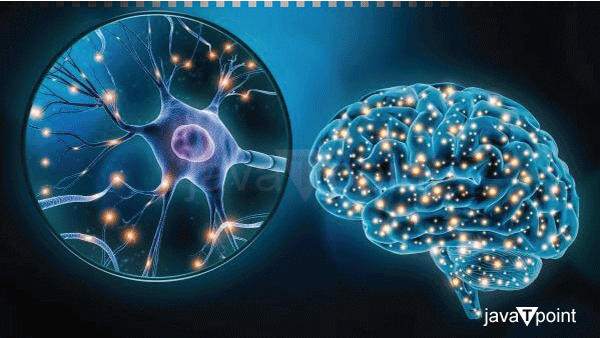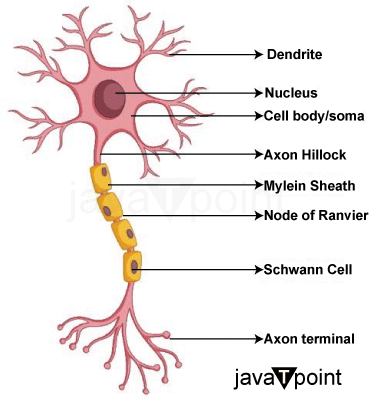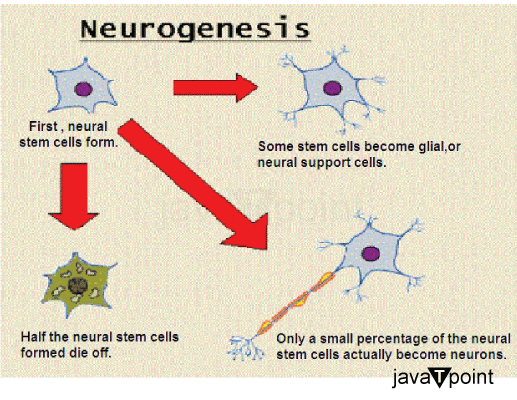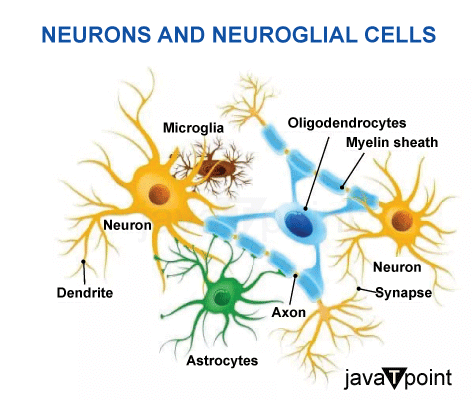Brain Cells
The human brain, a remarkable and intricate organ, is made up of billions of neurons that form intricate networks that underpin all aspects of cognition, behaviour, and consciousness. These brain cells, along with other supporting cells, contribute to the brain's incredible processing power and versatility.

The messengers in the brain are called neurons. The primary functional units of the brain are called neurons, and they are the primary source for transferring information via chemical and electrical signals. These specialised cells are the foundation of all cognitive processes, enabling everything from basic reflexes to complex thought processes.
A staggering number of neurons, or brain cells, make up the human brain. The adult human brain has an estimated 86 billion neurons. All cognitive functions, sensory perceptions, motor abilities, emotional states, and behavioural patterns are supported by complex networks and connections formed by these neurons. The brain's remarkable abilities are made possible by the thousands of connections that each neuron can form with other neurons, forming a complex web of communication.
Glial cells, which support and insulate neurons, are present in the brain along with neurons. Astrocytes, oligodendrocytes, and microglia are glial cells that are essential for maintaining the health of the brain, controlling its chemical environment, and promoting neuronal function. The complex and dynamic structure of the human brain is created by the combined population of neurons and glial cells, which also enables the intricate processes that define human consciousness and intelligence.
Neurons Consist of Several Key Components

- Cell body (Soma): The main part of a nerve cell that contains the nucleus and other cellular structures necessary for its function.
- Dendrites: These are branches extending from the cell body that receive incoming signals from other neurons. Dendrites play an important role in information integration.
- Axon: An axon is a long projection that carries electrical impulses away from the cell body. Axons can vary in length, with some extending considerable distances in the brain and spinal cord.
- Synapses: Synapses are specialized connections between neurons where information is transferred from one neuron to another. Neurotransmitters, chemical messengers, facilitate the transmission of signals across synapses.
The complex exchange of these components empowers neurons to communicate with mind-blowing speed and accuracy. Neurons transmit data by creating electrical driving forces known as activity possibilities. When an activity potential concludes an axon, neurotransmitters are discharged into the neural connection, official to receptors on the accepting neuron's dendrites and starting the transmission of signals.
Birth of a Neuron

Neurogenesis:
Early in embryonic development, a process called neurogenesis causes the formation of new neurons. The process of turning neural stem cells into fully developed neurons is known as neurogenesis, and it is highly orchestrated and complex. This process establishes the structure and operation of the nervous system.
Neural stem cell origins:
The precursors of neurons are called neural stem cells. Particularly in regions of the developing embryo known as the neural tube, these specialized cells can be found. Early in development, the neural tube forms and gives rise to the brain and spinal cord. Neurons and glial cells, which protect and support neurons, can be produced from neural stem cells through a remarkable process of division and differentiation.
Differentiation and Proliferation
Neural stem cells divide and create a larger population of progenitor cells during a process known as proliferation early in the process of neurogenesis. These progenitor cells go through a process known as differentiation and are more dedicated to developing into neurons.
Growth and migration:
Newborn neurons move to their final locations within the developing brain as differentiation progresses. This migration follows a particular pathway and is influenced by chemical cues. To ensure that different parts of the brain are properly connected, neurons frequently travel long distances to get to where they are needed.
Formation of Axons and Dendrites:
Neurons extend their axonal and dendritic projections once they have reached their intended locations. While dendrites are branched projections that receive signals from other neurons, axons are long, slender projections that transmit signals away from the cell body. Molecular signals that aid in establishing the precise connections needed for neural circuits direct the growth of axons and dendrites.
Synaptic Development:
The formation of synapses marks the conclusion of a newborn neuron's journey. Specialized junctions called synapses are where neurons communicate. Intricate networks that enable the transmission of electrical and chemical signals are formed when neurons extend their axons to contact the dendrites or cell bodies of other neurons.
Synapse development and pruning:
Neurons create connections with other neurons known as synapses during the process of synaptogenesis, which is essential for the processing of information. After this period of intense connectivity, there is a process called synaptic pruning during which extra synapses are removed. Synaptic pruning strengthens connections that are more frequently used while weakening connections that are not needed to optimize information processing in neural circuits.
Continued Adaptation:
Neuron development does not only occur during the embryonic stage. Neurogenesis continues into adulthood in some parts of the brain, most notably the hippocampus and the olfactory bulb. Learning, memory, and sensory processes are all influenced by adult neurogenesis. These areas' neural stem cells produce new neurons that integrate into already-existing neural circuits, enabling the brain to adapt and react to changing environments.
Death of Neurons
Apoptosis, also referred to as programmed cell death, is the natural and controlled process that causes neurons to die. During development, apoptosis helps shape the brain by removing extra neurons and synapses to improve neural circuits. Apoptosis also helps to maintain brain health by eliminating unhealthy or dysfunctional neurons.
Apoptosis, though, can play a role in neurodegenerative diseases when it is dysregulated. Specific neuron populations die in diseases like Alzheimer's, Parkinson's, and ALS, which cause cognitive, motor, and emotional impairments.
Types of Neurons
- Sensory neurons: These neurons transmit sensory information from the external environment or inside the body to the brain. They allow us to perceive sensations such as touch, taste, sound, and light.
- Motor neurons: Motor neurons transmit signals from the brain and spinal cord to muscles and glands, controlling movement and physiological responses.
- Interneurons: These neurons facilitate communication between sensory and motor neurons. They are responsible for processing and integrating information, which enables complex cognitive functions.
- Projection neurons: These neurons send signals over long distances within the brain or between the brain and the spinal cord. They play an essential role in connecting different areas of the brain.
Other Types of Brain Cells: Brain's Supporting Staff

While neurons are the stars of the show, there are other types of cells that play an important role in maintaining brain health and function:
- Glial cells: Glial cells, also known as neuroglia, are the supporting cells of the brain. They provide structural support; help nourish neurons and regulate the chemical environment of the brain. Glial cell types include astrocytes, oligodendrocytes, and microglia.
- Astrocytes: Astrocytes are star-shaped cells that help maintain the brain's chemical balance, supply neurons with nutrients and contribute to the formation of the blood-brain barrier, which protects the brain from harmful substances.
- Oligodendrocytes and Schwann cells: These cells are responsible for producing myelin, the fatty substance that surrounds axons, insulates them, and allows electrical signals to be transmitted more quickly.
- Microglia: These are immune cells in the brain responsible for detecting and responding to infections, injuries, and other threats to brain health.
Functions of Brain Cells
Here are some of the main functions of brain cells:
- Signal transmission: Neurons transmit information throughout the body by generating and conducting electrical impulses called action potentials. These impulses travel along the length of the neuron's axon and are transmitted to other neurons or target cells at special junctions called synapses.
- Information processing: Neurons process and integrate incoming signals from other neurons. It requires the sum of inputs from different sources to determine whether an action potential is generated or whether a signal is emitted.
- Sensory perception: Sensory neurons perceive and transmit information from the external environment or internal body to the brain. They allow us to perceive senses such as touch, taste, smell, sound, and sight.
- Motor control: Motor neurons transmit signals from the brain and spinal cord to muscles and glands, enabling voluntary and involuntary movements and physiological responses such as hormone secretion.
- Cognition and thinking: Neurons in the cerebral cortex are involved in higher-order cognitive processes such as thinking, problem-solving, reasoning and decision-making. Complex cognitive functions are achieved through complex neural networks and communication.
- Memory Formation: The creation, storage, and retrieval of memories are all heavily reliant on neurons. Long-term memory is aided by synaptic connections between neurons, or synapses, which can become stronger or weaker depending on neural activity patterns.
- Emotional Regulation: Amygdala and prefrontal cortex brain cells play a role in processing and regulating emotions. Emotional reactions and emotional expression are influenced by neuronal activity in these areas.
- Language and Communication: Language comprehension, production, and communication depend on neurons in specialized brain areas like Wernicke's and Broca's areas. These regions work together to coordinate the intricate procedures needed to speak and understand language.
- Balance and Coordination: The cerebellum's neurons are essential for maintaining equilibrium, coordinating movements, and ensuring smooth motor functions.
- Homeostasis: Specific brain cells, like those found in the hypothalamus, are involved in controlling bodily processes to preserve homeostasis. These cells keep an eye on their internal conditions and initiate the necessary reactions to maintain stability.
- Learning and Adaptation: Changes in synaptic connections between neurons are a component of the brain's capacity for learning and adjusting, or neuroplasticity. The brain can change its structure and function as a result of experiences and demands from the environment.
- Neurons in different regions of the nervous system are in charge of detecting and transmitting pain signals. They communicate information to the brain about tissue damage or potential brain damage, which causes the sensation of pain.
- Social Interaction: To comprehend the emotions, intentions, and actions of others, brain cells in areas connected to social cognition, such as the mirror neuron system, are important. These brain cells are important for social interaction and empathy.
- Autonomic functions like heart rate, breathing rate, and digestion are regulated by specific neurons in the brainstem and spinal cord. For the body to continue functioning without conscious thought, these functions must be maintained.
- Sleep and wakefulness: Neurons located in the brain's sleep-wake centres help regulate sleep rhythms and cycles. Different populations of neurons are responsible for staying awake and falling asleep.
What Happens in Case of Loss of Brain Cells
The loss of neurons also referred to as brain cells, can have a significant impact on a variety of cognitive, emotional, and physical functioning. The fundamental units of the nervous system, neurons are essential for the transmission of information via electrical and chemical signals. Although the brain has some plasticity and can partially compensate for cell loss, significant neuron loss can cause several problems.
- Cognitive Impairments: Information is processed and transmitted throughout the brain by neurons. Cognitive deficits brought on by neuronal loss may impact memory, attention, problem-solving, decision-making, and other higher-order cognitive processes. For instance, hippocampus neuron damage can cause memory problems that affect both short-term and long-term memory recall.
- Motor Dysfunction: Both voluntary and involuntary movements are regulated by neurons in the motor cortex and other parts of the brain. The loss of these neurons can cause motor dysfunction, which can compromise balance, coordination, fine motor skills, and general mobility. Significant motor impairments are caused by conditions like Parkinson's disease and motor neuron diseases like ALS (Amyotrophic Lateral Sclerosis), which cause the progressive loss of neurons.
- Impaired Autonomic Functions: The brainstem and spinal cord contain neurons that control autonomic processes like digestion, breathing, and heart rate. The body's ability to maintain essential functions without conscious control can be disrupted by the loss of these neurons, potentially resulting in problems with the heart, lungs, or digestive system.
- Neurodegenerative Disorders: A variety of neurodegenerative disorders, including Alzheimer's, Parkinson's, and Huntington's disease, cause neurons to gradually die. Cognitive, motor, and emotional abilities gradually deteriorate because of these conditions, frequently progressing to serious impairments.
- Cortical Shrinkage: When neurons are lost, the cortical layer of the brain shrinks, causing smaller, less densely packed brain regions. With ageing and some neurodegenerative diseases, this phenomenon is frequently seen.
- Plasticity and Compensation: The brain does, however, display some plasticity, allowing it to reorganize and compensate for some cell loss, even though significant neuron loss can result in these difficulties. New connections between neurons can form, and certain tasks that were previously carried out by lost neurons may now be performed by other brain regions. The degree of plasticity varies, though, depending on things like age, general health, and the rate of cell loss.
|




 For Videos Join Our Youtube Channel: Join Now
For Videos Join Our Youtube Channel: Join Now









